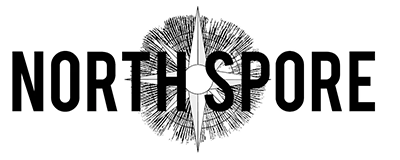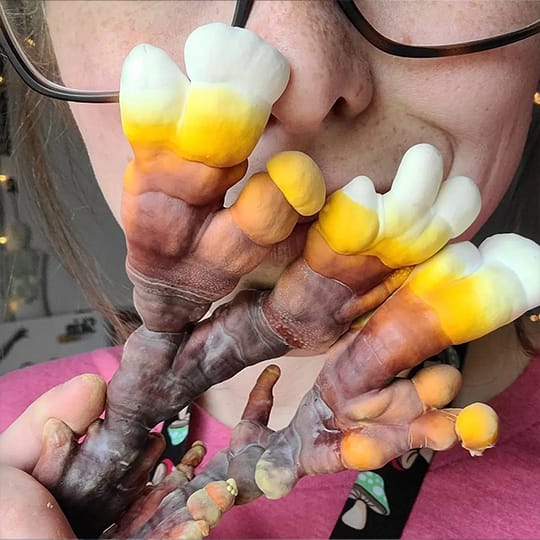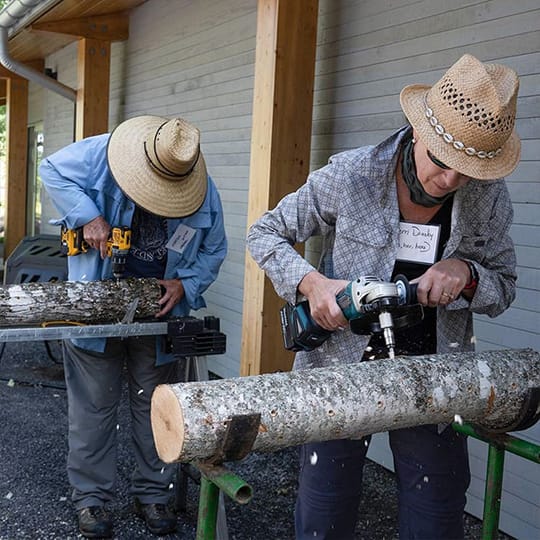

















| ⚠️ Not included | Spore or liquid culture syringe |
| Dimensions | 22.5”(L) 15.5”(W) 12"(H) |
Grow your own wood-loving edible or medicinal mushrooms indoors!
Our beginner-friendly Max Yield Bins 'Wood Lovr' Monotub Mushroom Grow Kit makes mushroom growing easy. Created by mycologists, this starter kit is equipped with everything you need to grow dung-loving species at home.
The hardwood-based sterile substrates, injection port bag, and coco coir provide mediums for colonization, incubation, and growth. We've also included self-adhesive filters and black micropore tape that fit over holes on the monotub lid and base. These are designed to keep out foreign spores and other contaminants while maintaining proper humidity, airflow, and gas exchange.
Each kit includes:
- (1) Max Yield Bins monotub
- (3) Wood Lovr sterile hardwood substrate (5 lbs each)
- (1) Sterilized grain bag with injection port (3 lbs)
- (1) Myco Coco compressed coco coir (3.4L)
- (2) Sheets of 2” monotub filters
- (1) Black micropore tape (10 yards)
Spawn to bulk ratio:
We recommended mixing 1 colonized grain spawn bag with 2-3 Wood Lovr bags. (Higher inoculation rates may improve your success.)
IMPORTANT:
Coco coir should only be added once monotub is fully colonized and pins begin to form. Only a thin layer of coco coir (approx. 1/2 inch) is necessary.
Optional accessories:
For more detailed information on items included in the kit, click the links below.
-
Designed by Max Yield Bins to make indoor mushroom growing easy, this monotub is equipped to control airflow circulation and humidity retention. Durable, with tight-fitting latches to keep the lid sealed to the base, it's fit with a custom light-blocking base to prevent mushrooms from growing on the sides or bottom of your bin.
Dimensions: 22.5” (L) 15.5” (W) 12” (H)
Cleaning instructions:
We recommend cleaning your monotub between each use to keep all surfaces as sterile as possible.
- Wipe down all surfaces to remove dirt and spores with a soft cloth soaked in warm water.
- Sanitize by spraying with a 70% isopropyl alcohol solution inside and out.
- DO NOT use bleach or abrasives.
-
Our Wood Lovr is a wood chip-based sterile mushroom substrate formulated by mycologists for hardwood-loving species. The combination of micro-to-macro particle sizes of premium North American hardwood chips and sawdust plus nitrogen supplementation helps to speed up growth and maximize yield. Each bag weighs 5 pounds. (Note: Bags are hydrated to field capacity.) Use Wood Lovr in monotubs, or experiment with trays, buckets, and containers in a humidity-controlled grow room or Martha set up.
Spawn to bulk ratio:
We recommended mixing 1 colonized grain spawn bag with 2-3 Wood Lovr bags. (Higher inoculation rates may improve your success.)
Best practices:
- We recommend clean hands, latex or nitrile gloves, and sterile technique when using Wood Lovr to reduce the introduction of contaminants.
- Be sure to mix colonized grain spawn thoroughly into your substrate.
- It is best practice to wait a minimum of 1 week after arrival before using sterile substrates to ensure they were not compromised during transit. Rest assured that your purchase is 100% guaranteed. If your substrate was compromised, we will replace it.
-
Our sterile grain bag with injection port was formulated by mycologists to maximize the speed and size of your mushroom grow. Each spawn bag contains 3 lbs of our proprietary blend featuring hydrated, nutrient-rich organic millet and wheat berries. Bags also include a self-healing injection port for use with a spore or culture syringe plus a 0.2 micron filter patch to block airborne contaminants while providing even gas exchange. Bag weighs 3 pounds. (Note: Bags are hydrated to field capacity.)
Spawn to bulk ratio:
We recommended mixing 1 colonized grain spawn bag with 2-3 Wood Lovr bags. (Higher inoculation rates may improve your success.)
-
IMPORTANT: Coco coir should only be added once monotub is fully colonized and pins begin to form. Only a thin layer of coco coir (1/4 to 1/2 inch) is necessary.
Coco coir provides many benefits to the mushroom cultivation process. In addition to moisture retention, the porous structure of coir material enables good exchange of air and water and is highly resistant to contaminants making it ideal for mushroom growing. It is often used as casing, added to substrates, and is even used in garden beds as an alternative to peat moss.
-
These self-adhesive filters are made from 100% recycled filter material and sized to fit over 2" holes on monotubs. Use these in place of polyfill to keep out foreign spores and other contaminants while maintaining humidity and air exchange. 2 sheets of 6 filters each. (Use on 2" holes found on the lid of the monotub.)
-
This latex-free, hypoallergenic paper micropore tape adheres well and leaves minimal adhesive residue upon removal. It's designed to keep humidity in and allow for proper air exchange, and its black color will make it nearly invisible to the eye one applied. Each roll measures 10 yards. (Use on small holes around the base of the monotub.)
-
Why is the difference between the large and small holes on the monotub?
Both the large and small holes are for gas exchange. However, given the proximity of the small holes to the substrate, many growers will remove the micropore tape during fruiting to increase oxygen -- especially if the mushroom caps are too small and/or the stems are too thin and stringy. That said, if the mushrooms are growing just fine, many will just leave the micropore tape on (as it protects against contamination.)
Do I need to use micropore tape on the small holes, or can I just leave them open?
During colonization, you don't want the small holes open. Covering them with the black micropore tape keeps out contaminants and maintains a higher CO2 level.
-
North Spore's products shall be used only for lawful purposes. North Spore does not condone Psilocybin (Psilocybe cubensis) or hallucinogenic (magic) mushroom growing in jurisdictions where it is currently illegal.
*Free shipping only applies to the contiguous 48 U.S. states and does not apply to Hawaii, Alaska, or U.S. Territories.
You may also like
Making the world of mushrooms accessible to all
North Spore was launched in 2014 by a mycologist, an organic farmer, and a photojournalist -- three college friends brought together through their shared love of the mycological world.
What began as a simple love for mushroom foraging and cultivation quickly developed into an obsession with all things fungi. From there, an urban mushroom farm was born, as was the desire to spread the spore to the masses.
- Reviews
- Questions
Thank you for submitting a review!
Your input is very much appreciated. Share it with your friends so they can enjoy it too!
Wood Lovr Monotub Mushroom Grow Kit
Excellent Kit, Processed and shipped as stated, highly recommend.
Wood Lovr Monotub Mushroom Grow Kit
Loved the kit. I liked it so much I am waiting on my Martha tent now. I am looking forward to order more stuff.
Wood lovr
Overall great company and products!
Wood Lovr Monotub Grow Kit
It is a very nice kit. Note there are two types materials used to grow mushrooms, this kit is for those that grow in Wood Based Substrates. and does contain a grain bag. You will still have to buy the spores of course as the life of spores is only a few months. My only wish was if it included a book or guide, but they have them in the store. So if you are a newbie, then get a book. I bought "Growing Gourmet and Medicinal Mushrooms". The price is great and it does have all you need.
Monotub
I am growing my first mushrooms now. I did make one little change to it. My husband drilled a hole into the top and added a led light to it. It is a great self contained grow chamber.













